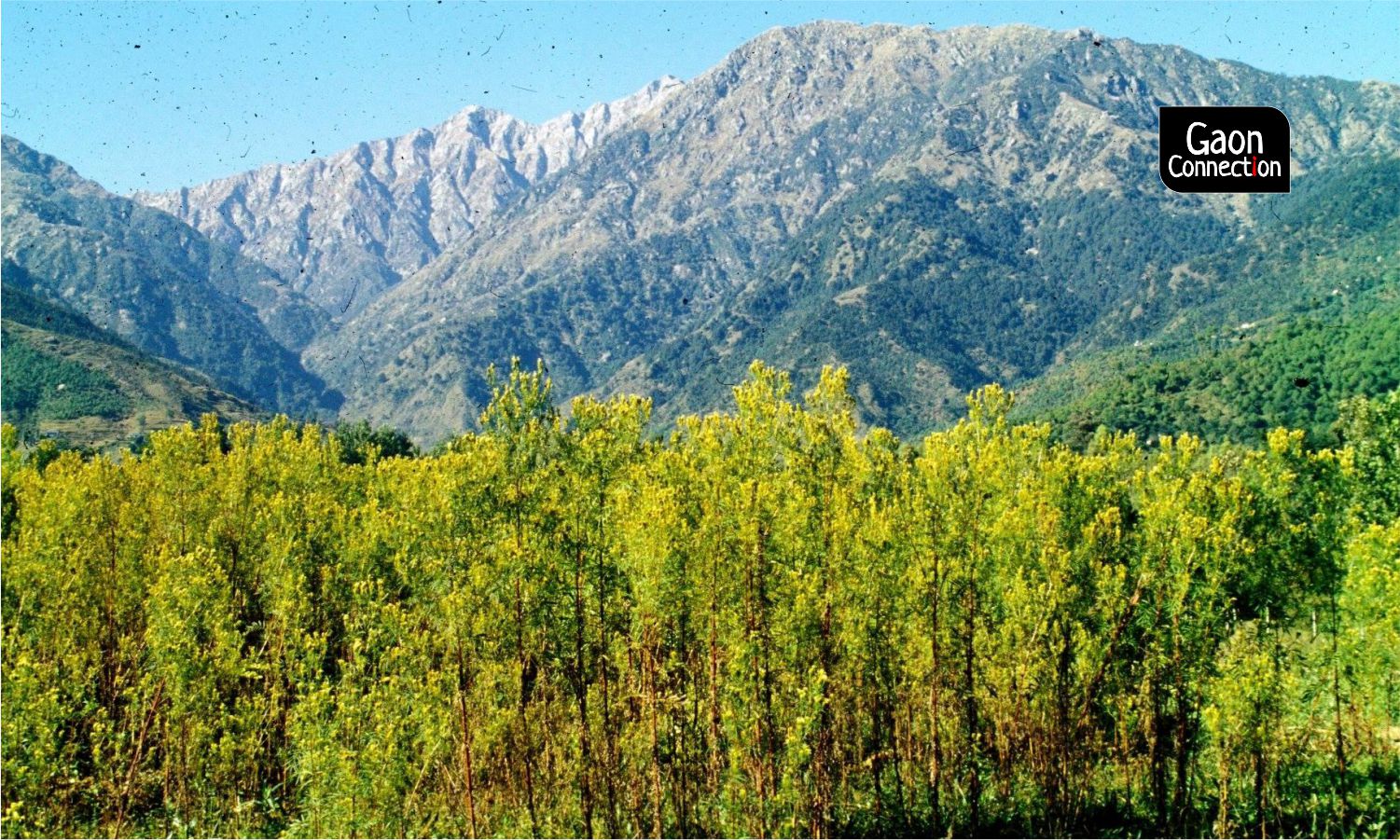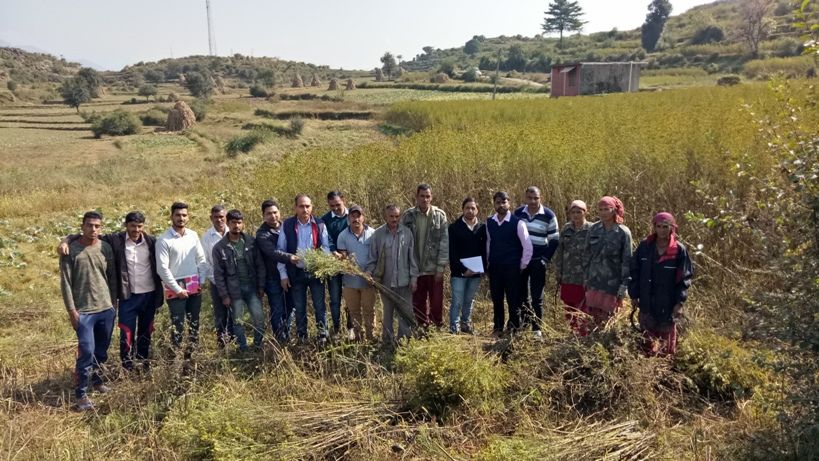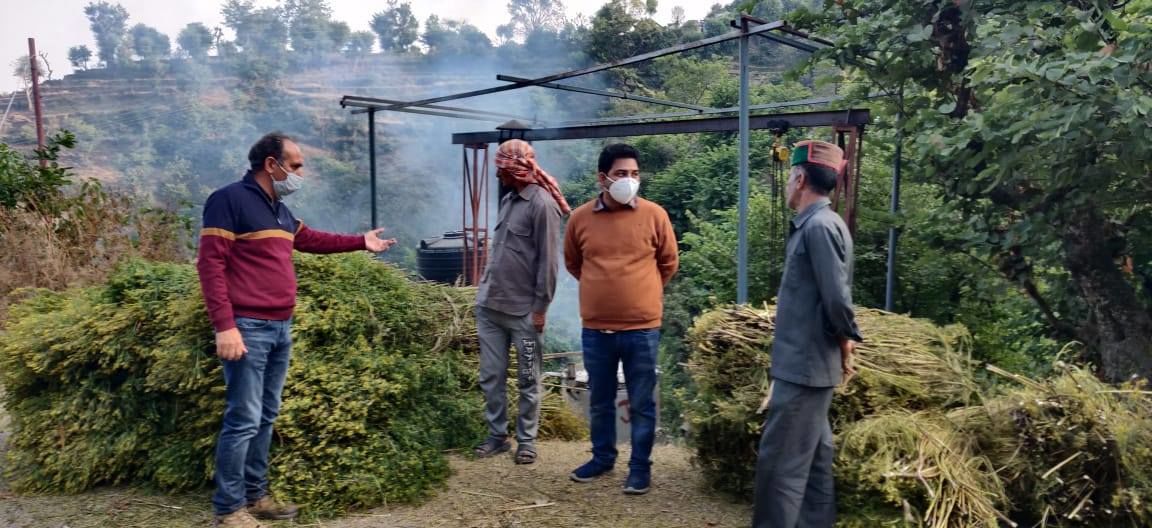Flower Power: Wild marigold farming opens up new avenues of income for farmers in Himachal Pradesh
Himachal Pradesh cultivates wild marigold in more than 300 hectares of land. The farmers are happy as their crop is safe from marauding animals that would destroy their earlier maize cultivation, and they have an assured market for the essential oil extracted from the flowers.


Photo: IHBT, Palampur.
Tired of monkeys ravaging his maize crop year after year, 52-year- old Darshan Pal gave up farming. But, in 2017, he learnt about wild marigold farming and is today a contented farmer whose fields of flowers are not attractive to monkeys anymore.
“Four years ago, scientists informed us about the cultivation of wild marigolds and, I now grow them in five bighas [a little under a hectare] of my land, and am earning a decent income from it,” Darshan Pal, who lives in Gogardhar village in Mandi district, Himachal Pradesh, told Gaon Connection.
Like Darshan Pal, farmers in the districts of Mandi, Chamba, Kullu and Shimla are growing wild marigold over 300 hectares of land under the aegis of the Institute of Himalayan Bioresource Technology (CSIR) located at Palampur in Himachal Pradesh. The extracts from the flowers are used to make essential oils and used extensively in making perfumes.
“Wild marigold is currently being cultivated upon at least 300 hectares in Himachal Pradesh, and they are being grown in Uttarakhand as well,” Rakesh Kumar, chief scientist at the Institute of Himalayan Bioresource Technology, told Gaon Connection. We began the initiative in 2016-17, he added. According to him wild animals are not attracted to the wild marigold and the crop is ready to be harvested within five or six months.

“The farmer is able to earn up to one and a half lakh rupees per hectare and they do not have to worry about selling their produce as the demand for wild marigold oil in the hilly areas is substantial,” said Rakesh Kumar. The produce is harvested and then sent to processing units where oil is extracted from it.
“We have set up 50 oil processing units, 35 of them in Himachal Pradesh and the rest in the union territory of Jammu and Kashmir, Uttarakhand, Manipur and Mizoram. These facilities can also process other aromatic crops such as lemongrass and palmarosa, etc., besides wild marigold,” informed Rakesh Kumar.
Wild marigold can also be cultivated in the plains, but the quality is not comparable to the ones grown in the hills. That is why, the price of Himachal Pradesh’s marigold oil fetches anything up to Rs 10,000 per litre, while the one from the plains sells at Rs 5,000 per litre.

There is a captive market for the farmers as all the oil they process is bought off by companies from them. The farmers can produce 30-35 kg of oil per hectare of produce.
Under the Aroma mission of the Council of Scientific & Industrial Research, farmers across the country are not only made aware and trained in cultivation of these plants but are also provided seeds to cultivate mentha, lemongrass, palmarosa and wild marigold.
Like Darshanpal of Mandi district, Pawan Kumar of Talla village in Chamba district has also begun cultivating wild marigold. “Maize cultivation was running into losses, so when I came to know about wild marigold, I began cultivating it. When I began earning well in the first year, other farmers took up marigold farming too,” the 47-year-old told Gaon Connection.

